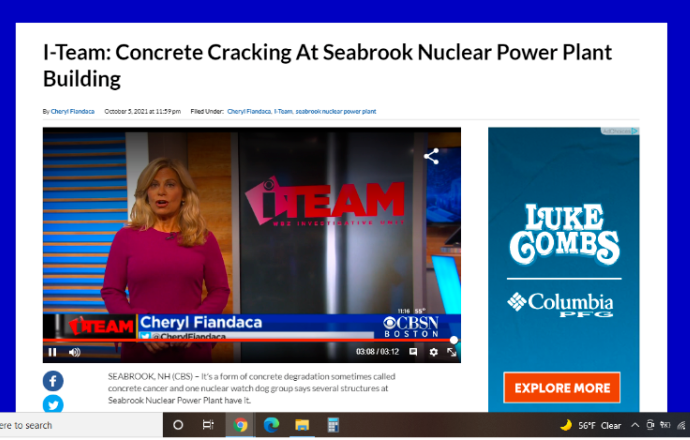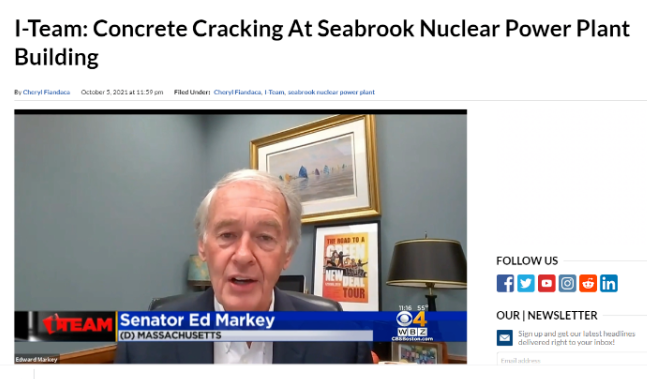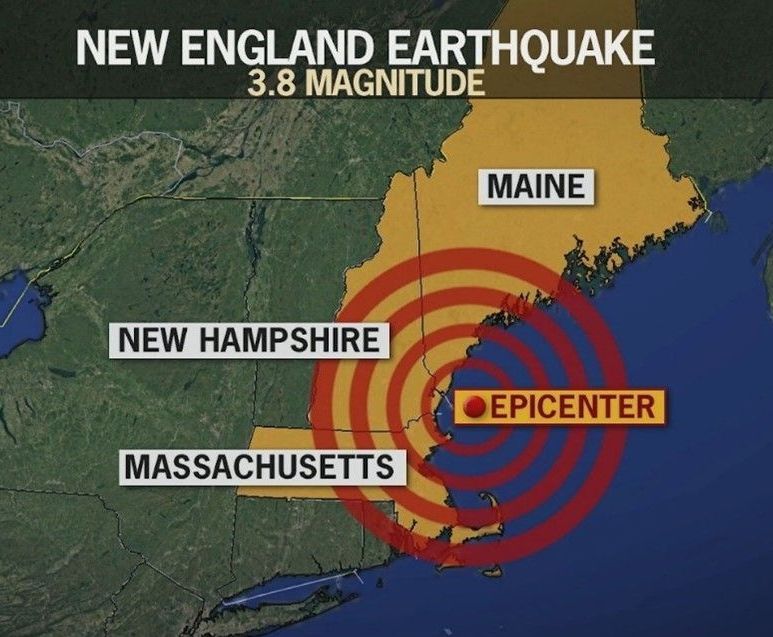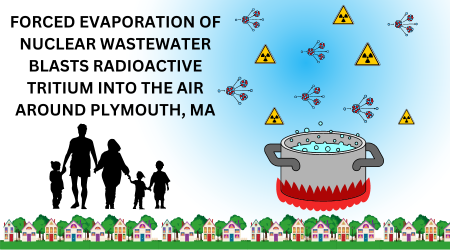WBZ's Cheryl Fiandaca Shines a Light on Seabrook's Concrete
Cheryl Fiandaca brought CBS viewers the story of C-10's work for safety
After months of following the story of Seabrook Station's concrete troubles and C-10's efforts calling for stronger oversight of the problem, award-winning investigative reporter Cheryl Fiandaca of WBZ-TV's I-Team introduced viewers in greater Boston to the issue. Fiandaca and her cameraman visited C-10 twice, and also got the chance to learn about our real-time radiological monitoring network. Watch the segment, here.
C-10 has been speaking about about alkali-silica reaction (ASR) at the nuclear power plant in our midst for over a decade. More about those efforts can be found on our webpage about the legal challenge we brought regarding Seabrook's concrete testing and monitoring protocols.
While Senator Ed Markey of Massachusetts told Fiandaca that more needs to be done, what wasn't mentioned is that C-10 has called on all members of Congress in Massachusetts and New Hampshire to speak out on behalf of public safety due to the severity of Seabrook's concrete woes, and that a joint response is in the works.
We've asked the lawmakers to urge the US Nuclear Regulatory Commission (NRC)'s Advisory Committee on Reactor Safeguards (ACRS)—an independent advisory body made up of various experts—to tap experts with particular knowledge of ASR to do a "deep-dive," on the issues that relate to the safe operation of Seabrook, as well as to how this relatively new problem is managed at other reactors where it may appear.
C-10's Executive Director Natalie Hildt Treat conducted a video briefing for staffers of Senators Jeanne Shaheen and Maggie Hassan (N.H.), Senator Elizabeth Warren (Mass.), Congresswoman Annie Kuster (N.H.) and Congressman Seth Moulton (Mass.) to understand the C-10's concerns with the handling of Seabrook's concrete, particularly after the startling revelations in the most recent quarterly inspection report, as described in our recent blog.
Just as Senator Markey's aide was drafting a sign-on letter to be circulated to colleagues, we got word that the Advisory Committee on Reactor Safeguards was meeting on October 6, 2021 to map out upcoming meetings, and would include Seabrook's concrete issues on the table.
As for why ACRS is putting the issue on a future agenda, it could be that they are aware of the interest in ASR, and that may be because C-10 shared our letter to Congress with NRC staff in Region 1. In any event, they are trying to get ahead of the curve.
That doesn't mean that we can pack up and go home. A letter from Congress is still warranted.
C-10 is pleased that the ACRS has agreed to put a focus on the problems of degrading concrete at Seabrook Station. Because this is a relatively new problem for the NRC—Seabrook being the first plant in the nation known to be suffering from alkali-silica reaction, and because ASR is such an opportunistic phenomenon—we hope that the ACRS's review is of sufficient breadth and depth that the pathway to the proper solution for ASR monitoring and management can be developed.
It's also important that the review be expeditious. Based on what we've seen, Seabrook's owner NextEra Energy has some very big decisions to make before too long regarding the investments that would be needed to shore up structures where the concrete has already degraded to a point of concern.
As many as seven structures are at or beyond what's called the design basis—an evaluation of whether they can perform as designed to protect the public and contain radioactive materials—particularly in the event of an earthquake.
The health and safety of people and the natural environment demands that the best experts are at the table, and that a science-based, predictive approach to understand the progression of ASR is employed.
A review and any new recommendations that the ACRS would make to the NRC could have far-ranging implications, since there are no comprehensive federal regulations that require testing of concrete at other aging nuclear reactors, or dictating how it must be monitored and managed should it appear.
Stay tuned!

Follow us





